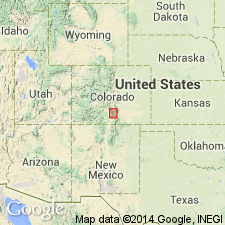
- Usage in publication:
-
- Pass Creek sandstone
- Modifications:
-
- Named
- Dominant lithology:
-
- Sandstone
- Siltstone
- Shale
- Limestone
- AAPG geologic province:
-
- Las Vegas-Raton basin
Summary:
Named for Pass Creek Pass, its type locality, Huerfano Co, CO in the Las Vegas-Raton basin. Best exposures about 1 1/2 mi south of Pass Creek Pass on U.S. Hwy 160, Huerfano Co. Is restricted to area south of Pass Creek Pass. Appears to be restricted to area south of Pass Creek Pass. Is a nonfossiliferous, greenish-gray to grayish-green, medium- to light-gray, and pink, predominantly fine- to medium-grained, arkosic to quartzose, thinly- to massively-bedded sandstone with a few interbeds of dark-gray to black shale, siltstone, and limestone. Is about 1,000 ft thick. Overlies Madera formation and underlies Sangre de Cristo formation. Overlies Desmoinesian strata and underlies Permian or Late Pennsylvanian strata. Assigned to the Desmoines and Missouri series. Not enough data to postulate depositional environment.
Source: GNU records (USGS DDS-6; Denver GNULEX).
For more information, please contact Nancy Stamm, Geologic Names Committee Secretary.
Asterisk (*) indicates published by U.S. Geological Survey authors.
"No current usage" (†) implies that a name has been abandoned or has fallen into disuse. Former usage and, if known, replacement name given in parentheses ( ).
Slash (/) indicates name conflicts with nomenclatural guidelines (CSN, 1933; ACSN, 1961, 1970; NACSN, 1983, 2005, 2021). May be explained within brackets ([ ]).

